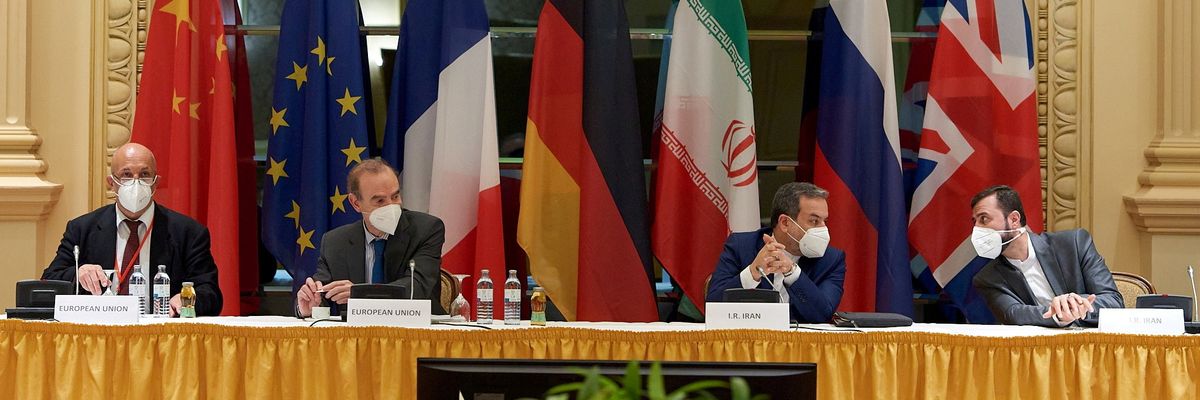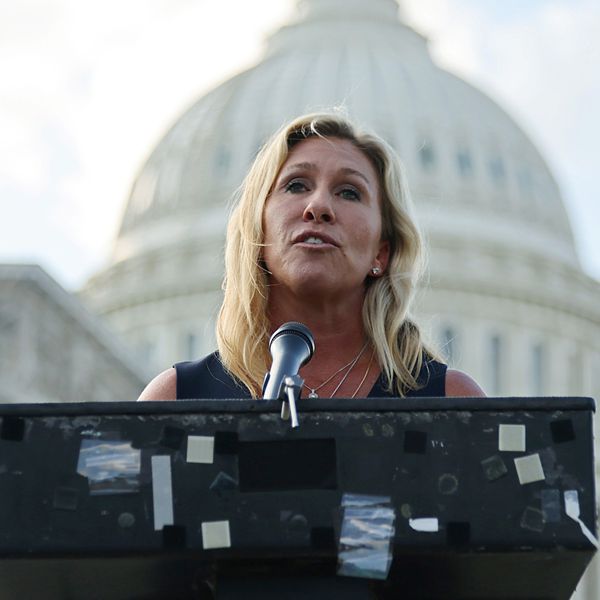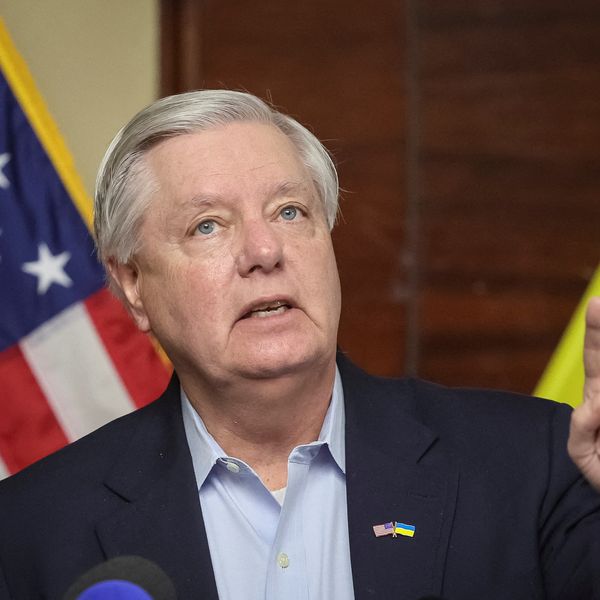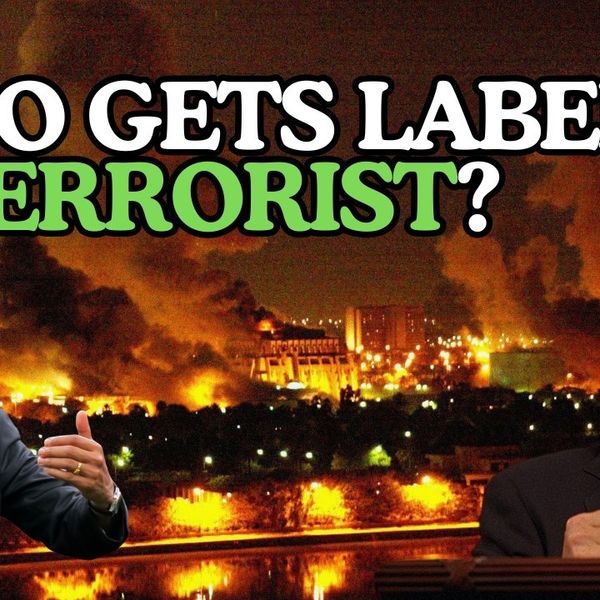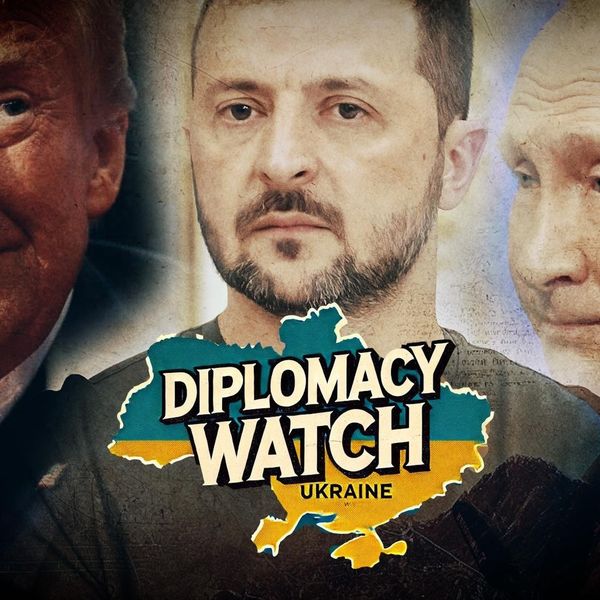Iran hawks are pulling out all the stops in their campaign to prevent Iran and the United States from returning to full compliance with the 2015 nuclear accord.
The latest effort comes in the form of an opinion piece published last week in Politico Europe by Foundation for Defense of Democracies fellows Benjamin Weinthal and Alireza Nader, purporting to show that Iran is currently seeking to develop nuclear weapons, and therefore, they claim, American diplomats should “take a timeout” from the JCPOA negotiations.
Weinthal — whose portfolio includes harassing people on Twitter — and Nader cite “European intelligence findings about the Islamic Republic’s illicit atomic weapons activities” which “make it clear that Tehran sought technology in 2020 for constructing nuclear weapons or other weapons of mass destruction.”
It’s a clever presentation that could easily fool a casual reader into believing that Iran is indeed developing nuclear weapons under the noses of U.S., European, Russian, and Chinese diplomats (if you can believe that Weinthal and Nader of all people know something they don’t). But the evidence they culled from these European intel reports — which are public, by the way — prove no such thing.
The first piece of evidence they cite is a public Swedish Security Service report that has concluded the following:
“Iran also conducts industrial espionage, which is mainly targeted against Swedish hi-tech industry and Swedish products, which can be used in nuclear weapons programs. Iran is investing heavy resources in this area and some of the resources are used in Sweden.”
The key line they want you to focus on here is “which can be used in nuclear weapons programs” — or in other words “dual use” technologies. But the report does not state outright that Iran is using this stolen tech for nuclear weapons, just that it’s possible.
What Weinthal and Nader also don’t mention is that the Swedish intel report also said that Russia, China, and Iran have tried to “gather information and knowledge from Swedish universities and colleges,” but it only singled out Russian and Chinese activities, i.e. not Iranian, as focused on “military research.”
Next the FDD fellows claim that Dutch intelligence has concluded that “Iran’s regime sought technology for nuclear and possibly other WMD weaponry.” But here again, the evidence they present does not support their conclusion.
They quote a Dutch intel report saying, “The joint Counter-Proliferation Unit of the AIVD and the MIVD [the country’s Military Intelligence and Security Service] is investigating how countries try to obtain the knowledge and goods they need to make weapons of mass destruction. Countries such as Syria, Pakistan, Iran and North Korea also tried to acquire such goods and technology in Europe and the Netherlands last year.”
Again, Weinthal and Nader are seemingly relaying this information because they want you to focus on the term “weapons of mass destruction,” which does not necessarily mean nuclear weapons. And they don’t say what the Dutch mean by that either.
The reality is that what constitutes WMD is quite broad. For example, the U.S. Department of Homeland Security defines WMD as “a nuclear, radiological, chemical, biological, or other device that is intended to harm a large number of people,” while the FBI says WMD can be defined simply as “[a] destructive device, such as an explosive or incendiary bomb, rocket, or grenade.”
But what makes this particular piece of evidence — that is meant to prove “Iran’s intention to develop nuclear weapons” — even weaker is the Dutch don’t say what Iran has done specifically, only that it, along with three other countries, have engaged in some very general activities aimed at acquiring “knowledge and goods” for unspecified WMD.
Continuing this trend, Weinthal and Nader then claim that intelligence reports from two German states, Bavaria and Schleswig-Holstein, “outlined Tehran’s efforts to obtain weapons of mass destruction material on German soil in 2020.”
But here again, Iran is lumped in with North Korea, Syria, and Pakistan as conducting general nefarious activities related to non-specified WMD. They write:
“Proliferation-relevant states like Iran, North Korea, Syria and Pakistan are making efforts to expand their conventional arsenal of weapons through the production or constant modernization of weapons of mass destruction,” the state of Bavaria’s agency wrote in its report. The German state of Schleswig-Holstein disclosed in its intelligence report the deceptive methods Iran uses to cover up its efforts to secure illicit technology for the world’s most deadly weapons: “Proliferation-relevant countries such as Iran, North Korea and Syria, but also Pakistan, try to circumvent safety precautions and legal export regulations and to disguise illegal procurement activities. To do this, they turn to mostly conspiratorial means and methods,” the intelligence agency wrote.
In no way do any of these intel reports that Weinthal and Nader cite say explicitly that Iran is, in their words, seeking technology “for constructing nuclear weapons.”
But even if that was true, it’s unclear why that would mean the United States has to pause its pursuit of rejoining the JCPOA, which would prevent Iran from using any of this technology it has supposedly illicitly acquired to build a nuclear bomb.
Of course what Iran is up to in Europe based on these public intel reports is not good, which is why what Weinthal and Nader propose — “[a] joint U.S.-EU task force ... with its findings released, at a minimum, to Congress” — isn’t that crazy of an idea. But why does that have to come at the expense of diplomacy to officially, and permanently, limit Iran’s nuclear program?
The article concludes by claiming that International Atomic Energy Agency Director Rafael Grossi is also “sounding a warning” and they quote him saying that the IAEA “found traces of uranium that has (sic) been subject to industrial processing in different places, which had not been declared by Iran.”
But what Weinthal and Nader don’t tell you is that Grossi is sounding an alarm about something completely different from what they claim these Europan intel agencies are reporting. The IAEA chief was not talking about current Iranian activities. He’s referring to what Iran had done prior to the cessation of its weapons program back in 2003 and the need for Iran to come clean about those activities, which of course it should.
The reality is that Weinthal and Nader already have a conclusion in mind and they are in search of evidence to support it. In fact, they provide a subtle hint that their presentation is completely bogus when they complain that these European intel reports “have gotten relatively little attention from Western journalists.” Indeed, there’s a reason for that: most Western journalists’ BS detectors probably started flashing red when presented with this information.
Moreover, the “Annual Threat Assessment of the U.S. Intelligence Community” issued in April concluded: “We continue to assess that Iran is not currently undertaking the key nuclear weapons-development activities that we judge would be necessary to produce a nuclear device.”
The bottom line is this article isn’t meant to present facts in an objective, good faith manner, but instead its purpose is to provide another piece of flimsy ammo for opponents of diplomacy with Iran to get back on the path to regime change and/or war.
